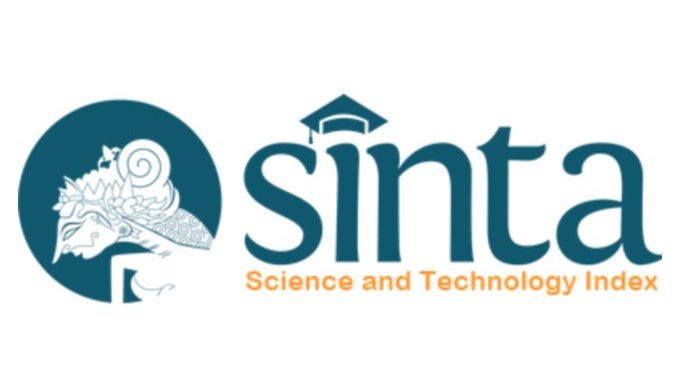Hiperkoagulabilitas pada Kehamilan dengan COVID-19
DOI:
https://doi.org/10.55175/cdk.v47i9.573Keywords:
COVID-19 dan kehamilan, hiperkoagulabilitasAbstract
Pandemi coronavirus disease 2019 (COVID-19) akibat severe acute respiratory syndrome coronavirus 2 (SARS-CoV-2) menginfeksi lebih dari 7 juta jiwa di seluruh dunia dengan angka kematian lebih dari 400.000 jiwa. Koagulopati adalah salah satu sekuele paling berat dari COVID-19. Hipotesis terkait koagulopati ini melibatkan peningkatan signifikan respons inflamasi yang mengakibatkan trombo-inflamasi melalui mekanisme seperti badai sitokin, aktivasi komplemen, dan endotelitis. Dalam kehamilan, terdapat beberapa perubahan fisiologis yang mempengaruhi koagulasi dan sistem fibrinolisis mengakibatkan kondisi hiperkoagulabilitas dan meningkatkan risiko kejadian tromboemboli. Tulisan ini memaparkan mekanisme hiperkoagulasi dalam COVID-19 dan kehamilan, manifestasi klinis, pemeriksaan laboratorium yang diperlukan, serta rekomendasi terapi.
Coronavirus disease 2019 (COVID-19) pandemic caused by severe acute respiratory syndrome coronavirus 2 (SARS-CoV-2) infects more than 7 million people worldwide with a death toll of more than 400,000. Coagulopathy is one of the most severe sequelae of COVID-19. This coagulopathy-related hypothesis involves a significant increase in the inflammatory response that causes thrombo-inflammation, through several mechanisms such as cytokine storms, complement activation, and endothelitis. In pregnancy, several physiological changes affect coagulation and fibrinolysis system which results in hypercoagulability and increases the risk of thromboembolic events. This article describes the mechanism of hypercoagulation in COVID-19 and pregnancy, clinical manifestations, necessary laboratory tests, and recommendations for therapy
Downloads
References
Zhu H, Wei L, Niu P. The novel coronavirus outbreak in Wuhan, China. Glob Heal Res Policy. 2020;5(1):6.
World Health Organization. Coronavirus disease 2019 (COVID-19). Weekly Epidemiological Update - 24 August 2020. WHO. 2020.
Emami A, Javanmardi F, Pirbonyeh N, Akbari A. Prevalence of underlying diseases in hospitalized patients with COVID-19: A systematic review and meta-analysis. Arch Acad Emerg Med. 2020;8(1):35.
Yi Y, Lagniton PNP, Ye S, Li E, Xu R-H. COVID-19: What has been learned and to be learned about the novel coronavirus disease. Int J Biol Sci. 2020;16(10):1753–66.
Bialek S, Boundy E, Bowen V, Chow N, Cohn A, Dowling N, et al. Severe outcomes among patients with coronavirus disease 2019 (COVID-19) — United States, February 12–March 16, 2020. MMWR Morb Mortal Wkly Rep. 2020;69(12):343–6.
Zhou F, Yu T, Du R, Fan G, Liu Y, Liu Z, et al. Clinical course and risk factors for mortality of adult inpatients with COVID-19 in Wuhan, China: A retrospective cohort study. Lancet 2020;395(10229):1054–62.
Guan W, Ni Z, Hu Y, Liang W, Ou C, He J, et al. Clinical characteristics of coronavirus disease 2019 in China. N Engl J Med. 2020;382(18):1708–20.
Huang C, Wang Y, Li X, Ren L, Zhao J, Hu Y, et al. Clinical features of patients infected with 2019 novel coronavirus in Wuhan, China. Lancet 2020;395(10223):497–506.
Tang N, Li D, Wang X, Sun Z. Abnormal coagulation parameters are associated with poor prognosis in patients with novel coronavirus pneumonia. J Thromb Haemost. 2020;18(4):844–7.
Abou-Ismail MY, Diamond A, Kapoor S, Arafah Y, Nayak L. The hypercoagulable state in COVID-19: Incidence, pathophysiology, and management. Thromb Res.2020;194:101–15.
Khalafallah AA, Ibraheem A-RO, Teo QY, AlBarzan AM, Parameswaran R, Hooper E, et al. Review of management and outcomes in women with thrombophilia risk during pregnancy at a single institution. ISRN Obstet Gynecol. 2014;2014:1–6.
Qiancheng X, Jian S, Lingling P, Lei H, Xiaogan J, Weihua L, et al. Coronavirus disease 2019 in pregnancy. Int J Infect Dis. 2020;95:376–83.
Valera MC, Parant O, Vayssiere C, Arnal JF, Payrastre B. Physiologic and pathologic changes of platelets in pregnancy. Platelets. 2010;21(8):587-95
Hayashi M, Inoue T, Hoshimoto K, Hirabayashi H, Negishi H, Ohkura T. The levels of five markers of hemostasis and endothelial status at different stages of normotensive pregnancy. Acta Obstet Gynecol Scand. 2002;81(3):208-13
Akinlaja O. Hematological changes in pregnancy - The preparation for intrapartum blood loss. Obstet Gynecol Int J. 2016;4(3):00109.
Kenny LC, Mccrae KR, Cunningham FG. Platelets, coagulation, and the liver. Chesley’s hypertensive disorders in pregnancy [Internet]. Elsevier; 2015. p. 379–96. Available from: https://linkinghub.elsevier.com/retrieve/pii/B9780124078666000171
Kasinathan G, Sathar J. Haematological manifestations, mechanisms of thrombosis and anti-coagulation in COVID-19 disease: A review. Ann Med Surg. 2020;56:173–7.
Klok FA, Kruip MJHA, van der Meer NJM, Arbous MS, Gommers DAMPJ, Kant KM, et al. Incidence of thrombotic complications in critically ill ICU patients with COVID-19. Thromb Res. 2020;191:145–7.
Becker RC. COVID-19 update: Covid-19-associated coagulopathy. J Thromb Thrombolysis 2020;50(1):54–67.
Chen N, Zhou M, Dong X, Qu J, Gong F, Han Y, et al. Epidemiological and clinical characteristics of 99 cases of 2019 novel coronavirus pneumonia in Wuhan, China: A descriptive study. Lancet 2020;395(10223):507–13.
Vlachodimitropoulou Koumoutsea E, Vivanti AJ, Shehata N, Benachi A, Le Gouez A, Desconclois C, et al. COVID-19 and acute coagulopathy in pregnancy. J Thromb Haemost. 2020;18(7):1648–52.
Royal College of Obstetricians and Gynaecologists. Coronavirus (COVID-19) Infection in Pregnancy Information for healthcare professionals. Centers for Disease Control and Prevention. 2020.
Shankar-Hari M, Phillips GS, Levy ML, Seymour CW, Liu VX, Deutschman CS, et al. Developing a new definition and assessing new clinical criteria for septic shock. JAMA. 2016;315(8):775.
Iba T, Levy JH, Warkentin TE, Thachil J, Poll T, Levi M. Diagnosis and management of sepsis-induced coagulopathy and disseminated intravascular coagulation. J Thromb Haemost. 2019;17(11):1989–94.
Atallah B, Mallah SI, AlMahmeed W. Anticoagulation in COVID-19. Eur Hear J - Cardiovasc Pharmacother. 2020;6(4):260–1.
Mummery RS, Rider CC. Characterization of the heparin-binding properties of IL-6. J Immunol. 2000;165(10):5671–9.
Ranucci M, Ballotta A, Di Dedda U, Bayshnikova E, Dei Poli M, Resta M, et al. The procoagulant pattern of patients with COVID-19 acute respiratory distress syndrome. J Thromb Haemost. 2020;18(7):1747-51
Tang N, Bai H, Chen X, Gong J, Li D, Sun Z. Anticoagulant treatment is associated with decreased mortality in severe coronavirus disease 2019 patients with coagulopathy. J Thromb Haemost. 2020;18(5):1094–9.
Thachil J, Tang N, Gando S, Falanga A, Cattaneo M, Levi M, et al. ISTH interim guidance on recognition and management of coagulopathy in COVID-19. J Thromb Haemost. 2020;18(5):1023–6.
Zhai Z, Li C, Chen Y, Gerotziafas G, Zhang Z, Wan J, et al. Prevention and treatment of venous thromboembolism associated with coronavirus disease 2019 infection: A consensus statement before guidelines. Thromb Haemost. 2020;120(06):937–48.
Perhimpunan Trombosis Hemostasis Indonesia (PTHI) Cabang Semarang. Tata laksana koagulopati pada Covid-19. Semarang; 2020 .p. 1–11.
Cuker A, Arepally GM, Chong BH, Cines DB, Greinacher A, Gruel Y, et al. American Society of Hematology 2018 guidelines for management of venous thromboembolism: heparin-induced thrombocytopenia. Blood Adv. 2018;2(22):3360–92.
Xu J, Wang L, Zhao L, Li F, Liu J, Zhang L, et al. Risk assessment of venous thromboembolism and bleeding in COVID-19 patients. Res Sq. 2020;(Pulmonology):1–16.
Bikdeli B, Madhavan MV, Jimenez D, Chuich T, Dreyfus I, Driggin E, et al. COVID-19 and thrombotic or thromboembolic disease: Implications for prevention, antithrombotic therapy, and follow-Up: JACC State-of-the-Art Review. J Am Coll Cardiol. 2020;75(23):2950–73.
Downloads
Published
How to Cite
Issue
Section
License
Copyright (c) 2020 https://creativecommons.org/licenses/by-nc/4.0/

This work is licensed under a Creative Commons Attribution-NonCommercial 4.0 International License.





















